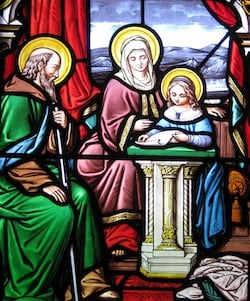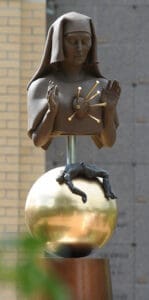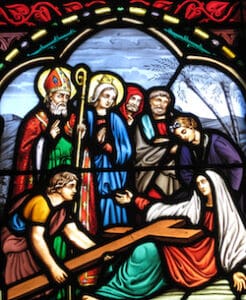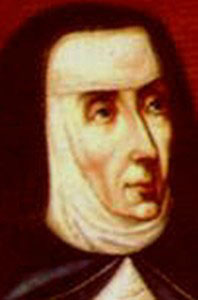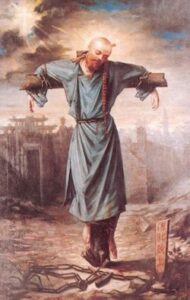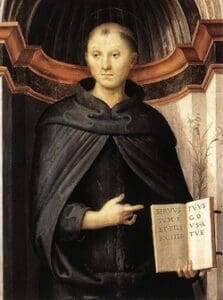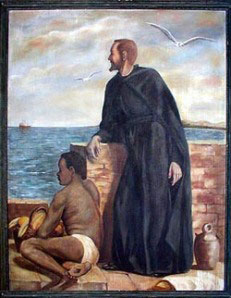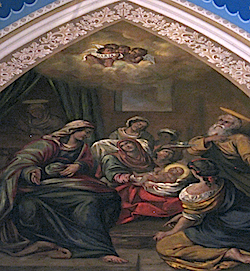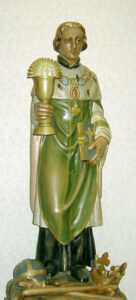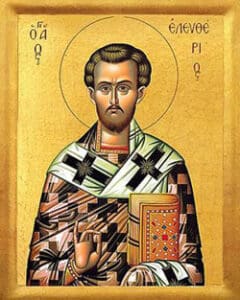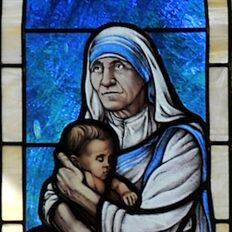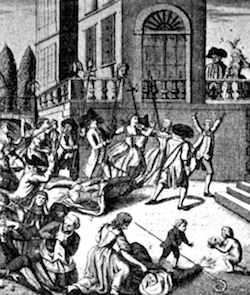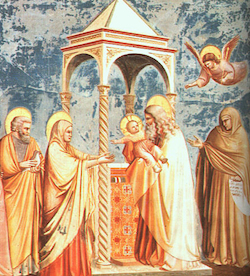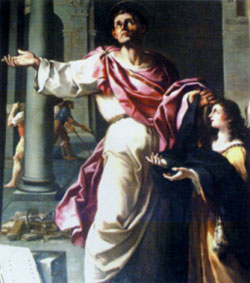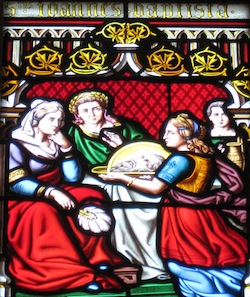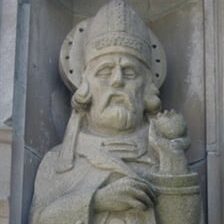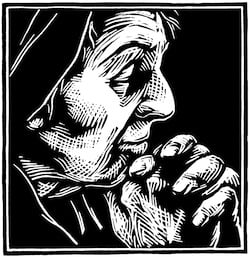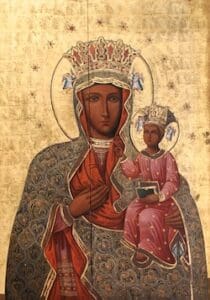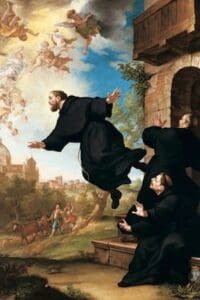

The rosary has been a popular, Scripturally-based set of prayers invoking Mary’s intercession since the Middle Ages. The most widely accepted legend of the rosary’s origins holds that Mary appeared to Saint Dominic when he was struggling with preaching in the early 13th century and instructed him in this new prayer practice. In this apparition, Mary told him to encourage people to pray the rosary, and Dominic found subsequent great success in his preaching once he began spreading this devotion. Given that the earliest recording of this story dates from three hundred years after these events supposedly took place, the legend of Mary’s appearance to Dominic is highly apocryphal. But it is true that the rosary grew in prominence in popular piety through the protection and support of Dominic and his Dominican friars.
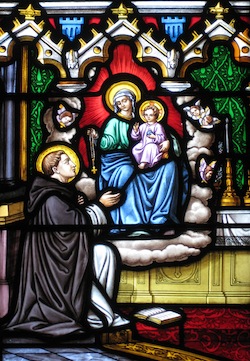
Why is the rosary such a fitting Marian devotion? In its essence, the rosary is a marriage of scriptural meditation and formulaic, repetitive prayers, whose aim is to facilitate the prayer practitioner’s contemplation of the events of Salvation history narrated in Scripture. The prayers and their accompanying “mysteries” allow those who pray them to meditate on the events of salvation history that occurred in Mary and Jesus’ lives. This prayerful contemplation of God’s actions imitates Mary’s disposition of openness to God’s will (Lk 1:38) and continual pondering of God’s actions in her life (Lk 2:19). Thus, the rosary is the Marian devotion par excellence, as it aims to instill in the devotee the very disposition of the Marian figure he or she contemplates in prayer.
October 7th was chosen as the feast for celebrating Mary as Our Lady of the Rosary due to her intercession for the European naval forces in the Battle of Lepanto in 1571. Originally, Mary was honored today under the title “Our Lady of Victory,” to celebrate the aid she gave to the European navy. For on the day of the battle, Pope Pius V called upon Christians all over Europe to pray the rosary in anticipation of the cataclysmic naval battle, asking for Mary’s intercession in battle. After the victory, the Pius V instituted a feast day to Our Lady of Victory, commemorating the power of the rosary in obtaining Mary’s intercession. Three years later, the name of this feast was changed to Our Lady of the Rosary, and its presence in October led the entire month of October to be celebrated still by many Catholics as the month of the rosary.


Our Lady of Victory figures prominently in stained glass windows in the Basilica of the Sacred Heart on Notre Dame’s campus. An entire side chapel in the Basilica features windows containing images of our Lady of Victory, the Battle of Lepanto, and her shrine in Paris. A famous Marian shrine in Paris, Notre-Dame des Victoires, is named after Our Lady of Victory. In 1832, an association of people began to gather at this Paris shrine to dedicate themselves to Mary through the reception of the Miraculous Medal and praying for the conversion of sinners. Miracles and great wonders occurred, and soon, tens of thousands people journeyed to the shrine. Eventually, the communities of prayer who gathered at the shrine evolved into the Archconfraternity of the Immaculate Heart of Mary. The confraternity and the centrality of this popular Marian shrine in nineteenth-century France partially explains the prominence of Our Lady of Victory in the Basilica of the Sacred Heart on campus: when Father Edward Sorin, C.S.C., left France as a missionary priest with the Congregation of Holy Cross to found the University of Notre Dame in the nineteenth century, this devotion was at the height of its popularity.
Despite the rosary’s mythical beginnings, and the spectacular origins of today’s feast, the rosary’s real power is not in the miracles worked through it, but in its gradual and gentle transformation of the hearts of those who pray it to model the obedient, courageous heart of Mary. And, finally, in its conversion of our vision to see God’s saving work not as history locked in ancient texts, but as a palpable, tangible reality in our own lives, today.
Our Lady of the Rosary, who helps us see the saving work of God in our own lives—pray for us!




